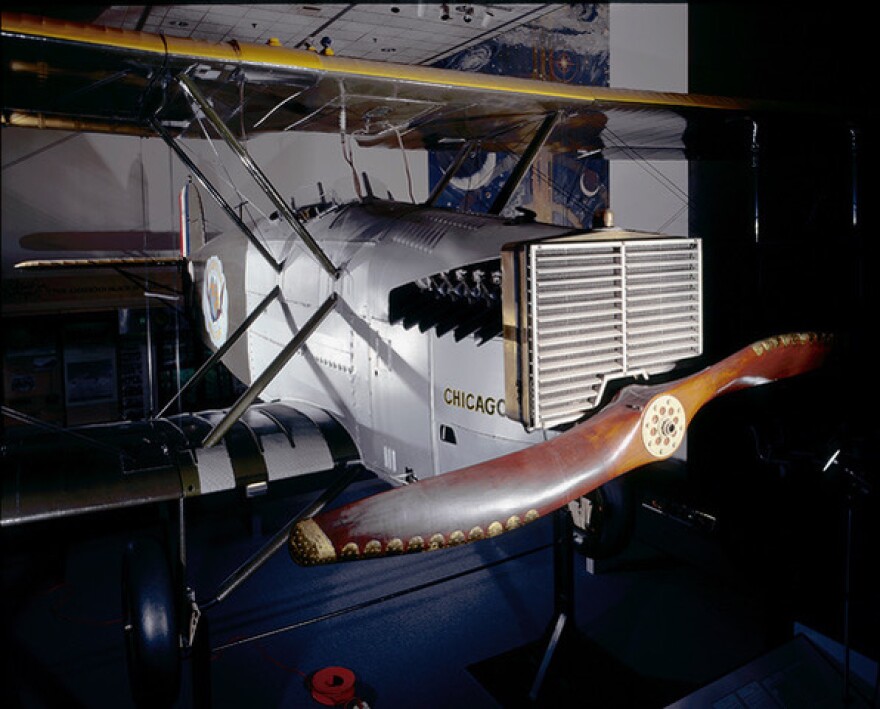The "Fighting McCooks" were a Dayton Civil War family, and McCook Field was named for the fighting McCooks in 1917 when the United States entered the war.
Col. Edward Deeds, who was the president of NCR, was asked to lead the Army's Aviation Engineering Division, and he and Charles Kettering decided where McCook Field was empty land. So we'll put the airfield there.
This was when the U.S. Air Force was the Army Air Force. The Air Force wasn't created until 1947, after World War II, so the army was everything after the end of World War I.
The U.S. military was being drastically reduced in size. One division of the Army, which managed to keep moving into the future was the Army Aviation Engineering Division.

McCook Field quickly became a central point in American military aviation and leader in all aviation progress. The European war accelerated the technology of flying, and the USA needed to catch up.
Army pilots were encouraged to keep pushing the edges of knowledge in flight testing. Much of the flight testing took place in the skies where we live today.
In addition to the performance accomplishments, McCook Field became the army's aviation laboratory for design and construction, high altitude fright clothing and survival gear, parachute design and testing, mid-air refueling, and the logistics of long range deployments.
Many of those elements were essential in the planning of an around-the-world attempt.
The planning began in 1923 and involved all elements of the U.S. government. The cooperation of the U.S. Navy and the State Department was essential and provided willingly.
The Wrights brothers' first flight at Kitty Hawk was just 120 feet. Nineteen years later, the U.S. Army was planning a 28,000-mile flight.
Douglas Aviation built the four aircraft whose purpose was to fly around the world: the Douglas World Cruisers.
They were very large biplanes with very large engines, and they were designed to travel long distances, so they weren't very fast, but they carried a lot of fuel. They were built with wheels, but when they had to fly over water, the wheels were taken off and they put the pontoons on.
They departed Seattle on April 6, 1924. and they flew across the Pacific. When they got to Asia, they put wheels back on, and then they crossed Asia and India, and then when they got back over water, they put the pontoons back on.
Across the globe were pre-positioned 15 engines, a dozen sets of wheels and pontoons, fuel and anticipated spare parts.
What McCook Field had to do was position all these parts and fuel and engines thousands of miles ahead. Then that was their mission was to get to those places.
It is worth mentioning that the Wrights brothers' first flight at Kitty Hawk just 19 years before was 120 feet. This was to be 28,000 miles.
Then 175 days later, this two surviving world cruisers landed at Washington, D.C. and were met by President Calvin Coolidge.
The journey was not yet complete. A few days later, the World Cruiser set off the USA to complete the mission. The first stop was Dayton.
The planes arrived with other Army planes escorting them. A crowd of 75,000 Daytonians were waiting when they landed at McCook Field. This was 1924, before the industrial expansion of Dayton, so that probably could have been half the city.

McCook Field was a constant source of entertainment. You could go take a picnic and sit along the river and watch airplanes take off.
Orville Wright used to sit at the engineer's club and watch airplanes take off while he was sitting on the veranda at the engineers club.
Aviation was the hot ticket in the 1920s. It was national headlines.
Some who live here ask, where is McCook Field now? When you drive north through Dayton on Interstate 75, and just when the highway makes the sweeping turn to the north after passing downtown, the ball fields right along the highway to the west is it.
That is where McCook Field was 100 years ago.
That was the cutting edge of aviation and it was thriving.



